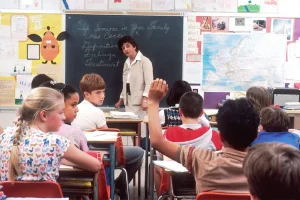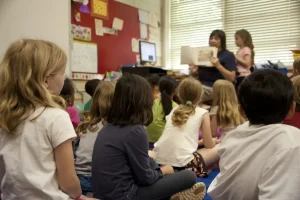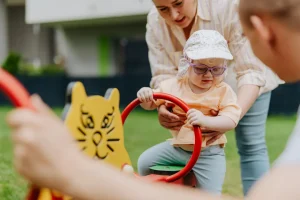In this blog, we discuss safeguarding information you need to know as an educator including why safeguarding is essential, how to safeguard children and young people, types of safeguarding issues and how can training in safeguarding help you in your role.
What is Safeguarding?
The Welsh Government Legislation Keeping Learners Safe (KLS), lays out the safeguarding and child protection laws that must be followed by all education establishments in Wales.
In the guidance, safeguarding is defined as “protecting children from harm, abuse and neglect.”
What is the Difference between Safeguarding and Child Protection?
Safeguarding differs from child protection because child protection focuses on protecting individual children who are suffering or likely to suffer harm, while safeguarding is “the action that is taken to promote the welfare of children and protect them from harm.”

Types of Safeguarding Concerns and Issues
Children, young people and vulnerable adults could suffer from a range of different safeguarding concerns. Here is a list of the most common issues:
- Abuse including physical, emotional and sexual
- Abuse between children or young people of the same age; often referred to as peer-on-peer abuse or child-on-child abuse. Peer pressure also falls into this category
- Neglect or maltreatment
- Bullying
- Online safety concerns such as grooming or cyber-bullying
- Mental health concerns such as anxiety or stress
- Depression, suicide or self-harm
- Eating disorders
- Gang-related concerns such as drug runners, country lines or cuckooing
- Allegations against other students or staff members
- Concerns about staff members
- Substance abuse
- Criminal child exploitation and child sexual exploitation
- Radicalisation
10 Categories of Abuse
Among safeguarding concerns, TES also has a list of the 10 categories of abuse which include:
- Physical abuse
- Psychological abuse
- Sexual abuse
- Neglect
- Self-neglect
- Financial or material abuse
- Discriminatory abuse
- Organisation abuse
- Modern slavery

The 6 Princapals of Safeguarding
The six principles of safeguarding were first introduced by the Department of Health in 2011 but are now embedded in the Car Act.
- Empowerment: Support individuals to make their own decisions and consent
- Prevention: Taking action before harm occurs
- Proportionality: taking the least intrusive response to the risk presented
- Protection: support for those in greatest need
- Partnership: between different organistaions within the community
- Accountability: transparency in safeguarding policies and practices
What is Safeguarding Children?
Often as an educator, you are best placed to notice safeguarding concerns. It is your responsibility to report any concerns you have for a child or young person to the designated safeguarding person in your establishment.
Every organisation that works with children should have a safeguarding policy as well as set safeguarding procedures for all staff to follow in order to record and report their concerns efficiently. All staff should also have safeguarding training and during their induction be informed about your establishment’s policies and procedures.
It is not just schools that should have robust safeguarding policies, organisations that need safeguarding policies include: hospitals, sports clubs, voluntary and community organisations and clubs, religious groups, private sector providers, and other childcare facilities outside of schools.

Early Intervention
Early intervention is the concept in which educators take a “proactive approach” to safeguarding, putting support in place for children and young people before danger occurs for their wellbeing or safety. This is opposed to a “reactive approach” where you only intervene when a child has suffered some form of harm to themselves or their wellbeing.
An easy way to promote early intervention in your establishment is to report and address “small” concerns as they can develop into massive safeguarding issues. For example, a teacher may notice that Billy has come to school without any lunch and think nothing of it. However, Billy may not have lunch all week which is a safeguarding concern. If no one reports Billy not having any lunch then the staff may not understand that it is a regular occurrence rather than a one-off instance.
By recording and reporting all types of “small” concerns we can paint a bigger picture of what is happening to that child and see patterns. Billy not having lunch could just be because he is forgetful, or he may be being neglected, or maybe his family is struggling to afford food. Either way, because this concern has been noted, systems can be put in place to better support Billy.
Early intervention is vital in safeguarding as it allows educators to help learners early on before a crisis point is reached. Solving minor problems can mean larger ones do not occur for those students in the future.
Safeguarding in Wales
For more information on safeguarding in Wales and the Keeping Learners Safe government legislation, you can read our three-part blog series which breaks down each guidance section into digestible pieces.
- Keeping Learners Safe: Welsh Government Guidance Part 1
- Keeping Learners Safe: Welsh Government Guidance Part 2
- Keeping Learners Safe: Welsh Government Guidance Part 3

How Can Training in Safeguarding Help you in your Role
If you work with children and young people, you are responsible for keeping those in your care safe from harm. Our safeguarding course on our Equal Academy covers types of abuse, reporting a concern, and how best to deal with disclosures from learners.
This course has been developed by two of Equal’s team members. One who was an ex primary school headteachers with many years experience as a Designed Safeguarding Person, and the other who is Equal’s Designed Safeguarding Person and is a practicing secondary school teacher in Wales.
Our safeguarding course is completely free of charge for all Equal staff members!




